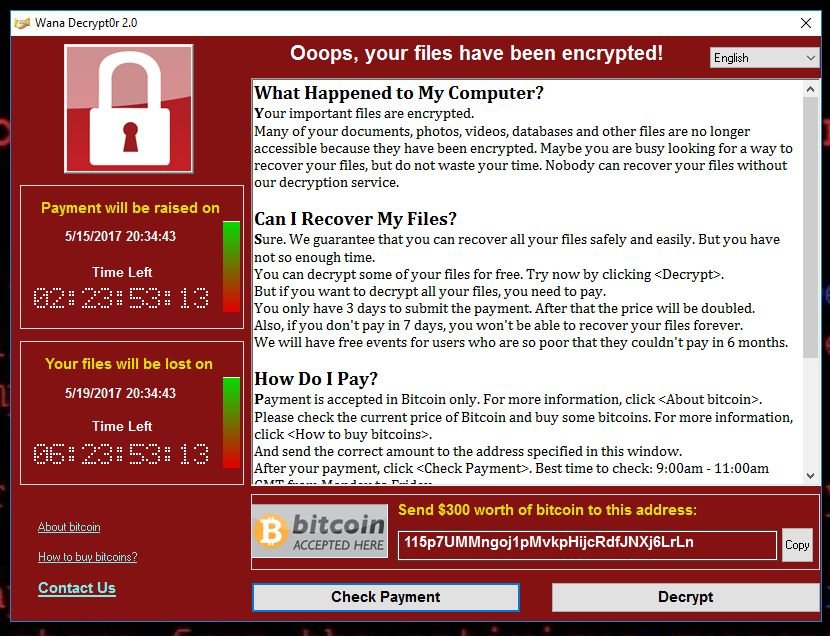[Best Way] How to Recover Files Deleted by Virus Attack?
Learn to recover files deleted by virus attack via an effiecint solution and prevent files from being deleted in this article. Besides, there're some data loss prevention tips.
Malware infections are one of the major culprits behind data loss on computers. Not only can they directly wipe out your data, but certain types of malware, like ransomware, can also lead to indirect data loss.
If you've experienced data loss due to malware, don't worry; there's a way to recover files deleted by virus attack. Check out the following sections to learn how to retrieve your valuable files and put your mind at ease.

Is it possible to recover deleted files by virus?
Today, it is common and necessary to use antivirus software to scan and protect computers and data. Among the antivirus apps users chose, McAfee is one of the most popular and efficient ones.
McAfee is designed to detect and eliminate potential threats to your computer's security. In doing so, it may occasionally flag legitimate files as suspicious and move them to a secure location called "quarantine".
When a file is quarantined, it is essentially isolated from the rest of the system, preventing it from causing harm.
However, there are instances when it erroneously removes important files if they appear suspicious. And this is not limited to McAfee; some Norton users also need to recover Norton deleted files.
Thankfully, these files are not permanently gone, and we can restore files deleted by virus. This article will demonstrate how to restore antivirus deleted files and also add them to the whitelist to prevent future deletions.
Can I restore antivirus deleted files?
It's crucial to understand how antivirus software functions to address this question. Unlike humans, tools like McAfee, Avast, Norton, etc., lack the ability to discern a file's significance to us.
They conduct regular scans on your storage and classify files based on preset parameters as either harmful or safe. Once a file is marked as suspicious, it gets quarantined and isolated from your other data.
Subsequently, McAfee notifies you to delete these files, and unfortunately, some important ones might slip through unnoticed. If the deletion occurred some time ago, and the drive where it was stored has been overwritten multiple times, recovery becomes quite challenging.
However, if you act promptly after deletion, your chances of successful recovery are significantly higher. Now, let’s check how does McAfee recover deleted files.
How to recover files deleted by virus?
When McAfee identifies a file as suspicious, it quarantines it before eventually deleting it. Quarantining means the file is isolated in a secure location where it can't cause harm, and a warning is displayed to the user.
It's worth noting that antivirus software places suspicious files in quarantine for a reason. Therefore, before un-quarantining a file, ensure it is not malicious. If you find files, especially exe files automatically deleted in Windows 10/11, please use antivirus to scan thoroughly.
Additionally, always download files from trustworthy sources and avoid downloading unknown files. However, if you believe the deleted file is safe, you can use data recovery software to retrieve it.
Recover files deleted by virus easily
If your files have been permanently deleted or shredded by McAfee, you can still recover them using data recovery software like AOMEI FastRecovery. With its user-friendly interface and powerful capabilities, AOMEI FastRecovery is the perfect companion to retrieve your deleted files effortlessly.
- Simple to use - Even users without technical expertise can effortlessly recover data in just three steps.
- Comprehensive - It can recover comprehensive data types, including photos, videos, documents, zip files, emails, and more.
- Efficient - Suitable for various data loss scenarios such as deletion, formatting, trash bin emptying, virus attacks, system crashes, and more.
- Compatibility - Supports Windows 11/10/8/7/Server, and Windows Server users can also recover deleted data from Windows Server 2016, 2019, 2022, 2025, etc.
👉 Don't let data loss bring you down! AOMEI FastRecovery's free version allows you to retrieve 500 MB of files try at no cost, giving you a glimpse of its incredible potential.
Step 1. Run AOMEI FastRecovery > select the drive where your lost files were previously stored > click the Start Scan button.
Step 2. Wait for the scan to complete. All lost files will be listed in different folders. You can also search for specific files in the search bar.
- Name: Enter part or all of the file name or its extension in the search box.
- Type: Select the data type, such as documents, images, videos, etc., based on the file you want to recover.
- Modified Date: Specify a date (today, yesterday, last 7/30 days, etc.)
- Size: Set the file size (128KB, 128KB~1MB, 1MB~512MB, etc.)
Step 3. Choose Deleted files > navigate to the original file location > select the files needed > click Recover x files. If no wanted files were found, go to Other missing files > select specific types to retrieve.
With AOMEI FastRecovery, you can recover virus infected files from USB effectively and quickly.
For unlimited data recovery from multiple devices, consider upgrading to AOMEI FastRecovery Pro and Tech editions.
Why does McAfee quarantine a file I need?
McAfee is intended to identify and eliminate viruses, worms, and various malware. Nevertheless, it may occasionally flag and remove files that are actually harmless, known as "false positives". Several factors can cause McAfee to mistakenly perceive a regular file as a threat.
✍ The file contains potential threats - Even if not currently infected, the file could harbor code that might infect the computer if opened, prompting McAfee's action.
✍ Attempting to access sensitive information - Files attempting to access sensitive data on your computer might be seen as potential threats, acting as gateways for other malicious files.
✍ Unknown source - Some files may be flagged as threats due to being from an unknown source or containing unusual code, leading McAfee to highlight them for further investigation.
✍ The file might be corrupted - Corrupted files can cause computer crashes or freezes, leading McAfee to remove them.
How to prevent McAfee from quarantining files?
Although you can recover files from the quarantine zone, there's a considerable chance that McAfee may detect them as viruses in subsequent scans.
Some users may wonder if they can completely stop/disable McAfee; actually, it is not recommended to do so, because your data will be exposed to danger. E.f, some users have received the blackmail message: Ooops, your files have been encrypted.
Instead, to prevent automatic deletion, consider exempting them from quarantine.
Step 1. Launch McAfee > click menu > go to My Protection > select Real-Time Scanning.
Step 2. In the Real-Time Scanning settings, find the Exclude Files section. This option allows you to add files to an exclusion list, bypassing the antivirus scan. Click on Add File to proceed.
Step 3. Select the file you want to exempt and click Open. The file is now successfully added to the quarantine exemption list.
To sum up
McAfee Antivirus provides robust protection against malware and viruses. However, like most antivirus software, it's not infallible and may inadvertently delete harmless yet essential files.
The good news is that you can recover files deleted by McAfee using data recovery software like AOMEI FastRecovery. By following the provided methods in this post, you can retrieve and safeguard your valuable files efficiently.
Also, you might as well choose professional data backup software for Windows to serve as second insurance.



